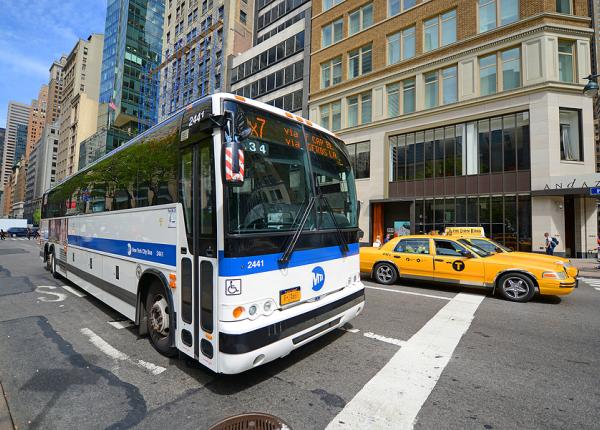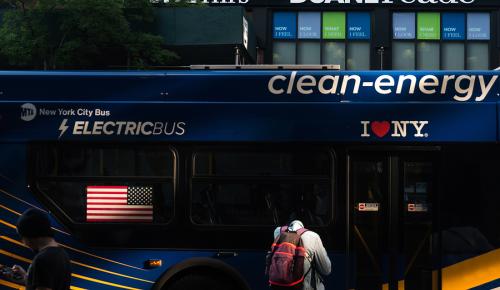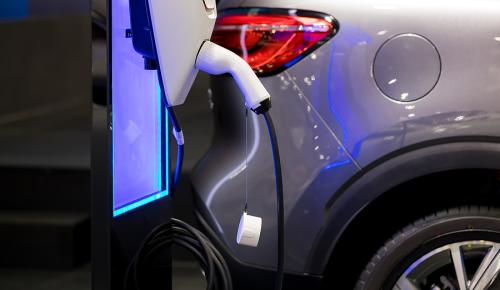Electric Vehicles & Transportation
The transportation sector is the nation’s largest source of greenhouse gas emissions, but it’s on the verge of a massive transformation. With the shift to electric vehicles now inevitable, Synapse helps its clients address the coming challenges: how can the transportation sector decarbonize quickly and cost-effectively; how can cities and states remedy existing inequities in transportation infrastructure (and avoid new ones); and how should the electricity sector be planning ahead to minimize strain on the grid and ratepayers?

Overview
Electric vehicles (EV) are poised to decarbonize the sector while unlocking opportunities to lower costs, accelerate environmental progress, and improve electric reliability by integrating the transportation and electric power sectors. EVs, in combination with other sustainable transportation modes, can transform a transportation system that today is inequitable, expensive, and inefficient. Synapse provides our clients with insight into the decarbonization of the sector and the enormous opportunities that this transformation will involve.
Electric Vehicles
Synapse assists government agencies, consumer advocates, environmental stakeholders, utilities, and regulators prepare for the rapid electrification of our transportation system to maximize the benefits. The transportation sector is reaching a critical point in its transition to zero-emissions vehicles, which brings exciting opportunities to make transportation cleaner and more convenient, equitable, and affordable for all. Synapse analyzes transportation electrification policies, costs and benefits, employment impacts, rate impacts, emissions impacts, grid integration issues, siting issues, and technical and economic potential. This work includes:
- Developing decarbonization pathways for the transportation sector
- Calculating the GHG and criteria pollutant emissions, electricity consumption, economic impacts, and public health impacts of increased EV adoption using Synapse’s Electric Vehicle Regional Emissions and Demand Impacts (EV-REDI) tool
- Consumer adoption modeling to determine how technological changes and policies impact the rate of EV adoption
- Accounting for transportation electrification in utility resource planning
- Examining environmental and consumer costs and benefits of electrification relative to fossil fuel-powered vehicles
- Determining how electric vehicle supply equipment (EVSE) investment can support EV adoption and identifying criteria to consider in selecting charging infrastructure locations
- Analyzing the electrification of medium- and heavy-duty vehicles, school buses and transit buses, and corporate fleets, including technical potential, charging infrastructure requirements, and rate design
- Modeling vehicle-grid integration, including managed EV charging and Vehicle-to-Grid (V2G) technology, to understand the impacts on the electric grid using electric power dispatch models such as EnCompass
Our work on electric vehicles covers a broad range of topics. We routinely analyze various environmental, economic, and public health benefits associated with EVs using a suite of in-house and publicly available tools. In addition to the electrification of light-duty passenger vehicles, Synapse helps our clients predict and analyze the future electrification of medium- and heavy-duty vehicles and commercial fleets. Because these vehicles have different characteristics than their light-duty counterparts in terms of ownership, available electrification technology, and use profiles, they face a separate set of challenges when attempting to meet electrification and emissions goals.
For all vehicle types, Synapse thinks hard about how EVs can best be integrated into the grid. EVs are on track to account for a large amount of incremental load, and strategically and flexibly charged EVs can serve as a transformational grid resource to integrate renewables, minimize distribution and energy costs, and strengthen grid resiliency.
We can use in-house economic models and the EnCompass electric power sector planning and dispatch model to study vehicle grid integration including managed charging and vehicle to grid (V2G) technology. We also devote careful attention to the policies and programs that will be needed to coordinate and shift EV charging optimally, including rate designs like time of use rates, utility programs, and RTO-and ISO-operated markets. We have analyzed utility proposals for V2G programs using electric school buses and have evaluated how electricity rate designs may interact with such programs.
Rate Design & Rate Impacts for EVs
Our proven expertise in demand response and rate design allows us to predict the ways in which this emerging practice will impact the grid and provide a further benefit of vehicle electrification. Our EV-focused rate design and rate impact analysis includes:
- Evaluating how alternative rate designs and managed charging programs can encourage cost-effective adoption of EVs while encouraging charging behavior that minimizes costs to the grid
- Comparing the costs of operating EVs under various rate designs with the costs of fueling internal combustion engine vehicles with gasoline and diesel
- Reviewing the impact of demand charges on the economic competitiveness of electrification
- Proposing and breaking down novel rate designs that consider the specific nature of EV load and the potential for significant increases in EV load in the future
- Calculating the impacts of increased EV adoption on the rates paid by non-EV customers
- Accounting for the impacts of EV charging on distribution systems and electric grid infrastructure, and quantifying the value associated with shifting chargers to off-peak times
Fuel Economy & Zero-Emission Vehicle Standards
Synapse assesses the regional and national impacts of vehicle fuel economy standard changes. National CAFE standards and state low- and zero-emissions vehicle programs such as California’s Clean Cars II and Advanced Clean Trucks rules are critical policy tools to reduce emissions from motor vehicles. We evaluate how these regulations impact emissions, fuel consumption, EV market share, and consumer costs. This work includes:
• Modeling employment and GDP impacts using IMPLAN (an economic input-output model)
• Estimating the net cost of ownership savings from increased fuel economy standards
• Analyzing the link between fuel economy standards and automobile safety
Alternative Transportation
Decarbonizing transportation sustainably and equitably will require a suite of approaches, including transportation demand management, mode shifting, complete streets, and more. Making investments in public transportation as well as pedestrian and bike infrastructure can improve mobility and accessibility, especially for low-income households and those without private vehicle access. Combined with improved land use planning and smart growth, these more energy-efficient transportation modes can reduce private vehicle trips and the associated emissions, costs, traffic, and negative health impacts.
Synapse has a proven ability to assemble and manage teams that are highly qualified to analyze alternative transportation modes. Our expertise in vehicle electrification and the broader energy sector, combined with our vast network of like-minded problem-solvers, positions us to tackle these challenges.
Contact an Expert




